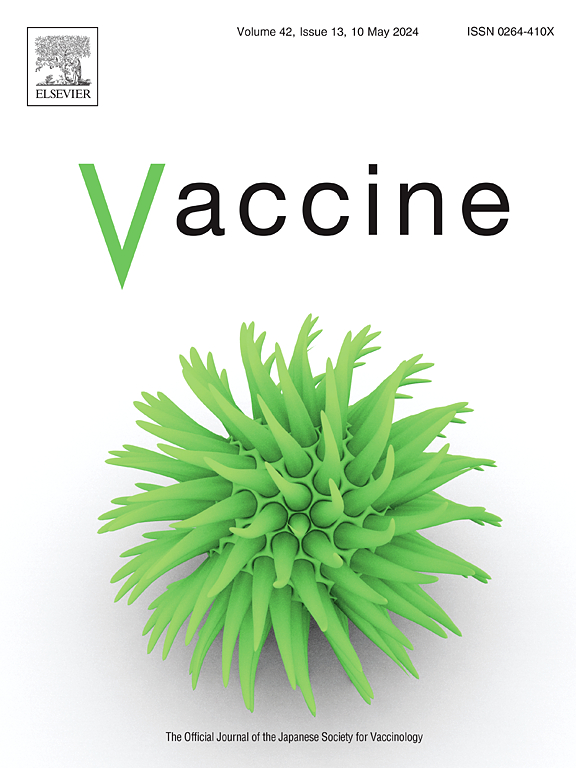COVID-19大流行期间Medicare和Medicaid参保人按地区社会脆弱性划分的肺炎球菌疫苗接种差异变化
IF 4.5
3区 医学
Q2 IMMUNOLOGY
引用次数: 0
摘要
2019冠状病毒病大流行扩大了美国长期存在的健康差距,并刺激了对疫苗接种相关因素的新研究。虽然大部分焦点都集中在COVID-19疫苗上,但很少有研究调查肺炎球菌疫苗接种的差异。方法采用回顾性队列设计,我们评估了不同社会脆弱性水平的县级肺炎球菌疫苗接种率差异在两个时期的变化情况:COVID-19之前(医疗保险:2016-2019;医疗补助:2017-2019年)和COVID-19期间(2020 - 2022年)。疫苗接种数据来自成年医疗保险参保者(年龄≥65岁)和医疗补助参保者(年龄19-64岁)的要求,而社会脆弱性则使用少数民族健康社会脆弱性指数来衡量。我们使用经人口统计学和临床因素调整的差异中差异回归模型分析了疫苗摄取差异的变化。在COVID-19之前和期间,居住在高易感县的登记者的疫苗接种率较低。在流感大流行期间,在3750万医疗保险参保者中,肺炎球菌疫苗接种率的差异减小了,但在810万医疗补助参保者中,肺炎球菌接种率的差异增大了。即使在调整了入组者的人口学和临床特征后,这些模式仍然存在。在COVID-19期间,医疗保险参保者在肺炎球菌疫苗接种方面的差距缩小,可能是由于风险认知增强,而医疗补助参保者的差距扩大,可能是由社会经济障碍造成的。这些发现强调了个人人口统计学和临床特征以及地区层面的社会脆弱性在影响疫苗摄取方面的复杂相互作用。为改善公共卫生,各项举措应考虑到这些多方面因素,以有效解决差距问题。本文章由计算机程序翻译,如有差异,请以英文原文为准。
Changes in pneumococcal vaccination disparities by area-level social vulnerability during the COVID-19 pandemic among Medicare and Medicaid enrollees
Background
The COVID-19 pandemic amplified long-standing health disparities in the United States and spurred new research into factors associated with vaccine uptake. While much of the focus has been on COVID-19 vaccines, few studies have examined disparities in pneumococcal vaccination.
Methods
Using a retrospective cohort design, we assessed how disparities in county-level pneumococcal vaccination rates by social vulnerability level changed across two periods: before COVID-19 (Medicare: 2016–2019; Medicaid: 2017–2019) and during COVID-19 (2020−2022). Vaccination data were derived from the claims of adult Medicare enrollees (aged ≥65 years) and Medicaid enrollees (aged 19–64), whereas social vulnerability was measured using the Minority Health Social Vulnerability Index. We analyzed changes in vaccine uptake disparities using a difference-in-differences regression model adjusted for demographics and clinical factors.
Findings
Both before and during COVID-19, vaccination rates were lower among enrollees residing in high-vulnerability counties. During the pandemic, disparities in pneumococcal vaccination rates decreased among the 37.5 million Medicare enrollees analyzed but increased among the 8.1 million Medicaid enrollees. These patterns remained even after adjusting for enrollee demographic and clinical characteristics.
Interpretation
During COVID-19, Medicare enrollees exhibited reduced disparities in pneumococcal vaccination, possibly due to heightened risk perception, whereas Medicaid enrollees experienced widening gaps, likely driven by socioeconomic barriers. These findings highlight the complex interplay of individual demographic and clinical characteristics, and area-level social vulnerability in shaping vaccine uptake. To improve public health, initiatives should consider these multifaceted factors to effectively address disparities.
求助全文
通过发布文献求助,成功后即可免费获取论文全文。
去求助
来源期刊

Vaccine
医学-免疫学
CiteScore
8.70
自引率
5.50%
发文量
992
审稿时长
131 days
期刊介绍:
Vaccine is unique in publishing the highest quality science across all disciplines relevant to the field of vaccinology - all original article submissions across basic and clinical research, vaccine manufacturing, history, public policy, behavioral science and ethics, social sciences, safety, and many other related areas are welcomed. The submission categories as given in the Guide for Authors indicate where we receive the most papers. Papers outside these major areas are also welcome and authors are encouraged to contact us with specific questions.
 求助内容:
求助内容: 应助结果提醒方式:
应助结果提醒方式:


